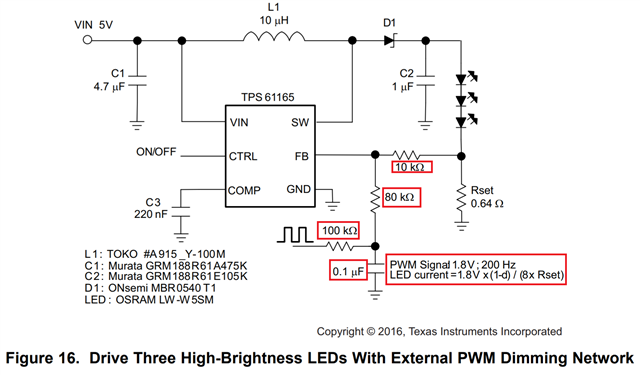Hi All,
I have a question about "9.2.2 Additional Application Circuits".

1. Is it possible to adjust the PWM Duty from 0 to 100% in the circuit of fig.16?
2. In the circuit of fig.16, 1.8V PWM signal is input. Is it okay to input 3.3V signal?
3. Please tell me the PWM frequency range of the circuit of fig.16.
4. Is d in the formula " LED current =1.8V x (1-d) / (8x Rset)" a PWM duty?
5. Are 100kΩ and 0.1uF of the circuit of fig.16 for PWM smoothing? Also, are 80kΩ and 10kΩ the ratio of Rset (8xRset in the formula)?
6. Please let me know if there is anything else you need to be aware of in the fig.16 circuit.
Best Regards,
Ishiwata


